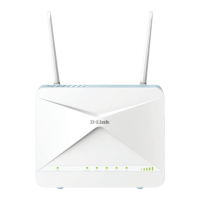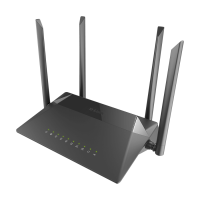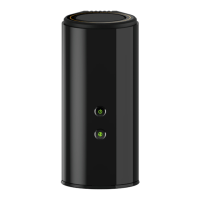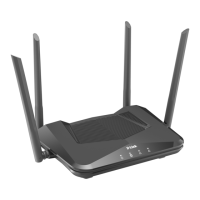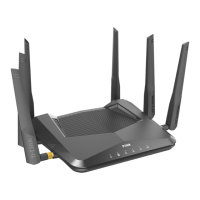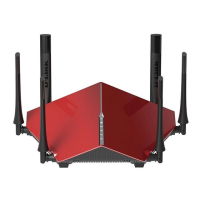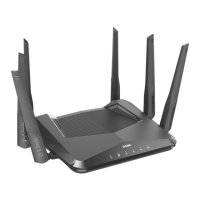Beacon Interval: Beacons
are packets sent by an access
point to synchronize a wireless
network. Specify a beacon
interval value. Default (100) is
recommended.
RTS Threshold
: This
value should remain at its
default setting of 2432. If you
encounter inconsistent data
flow, only minor modifications
to the value range between 256
and 2432 are recommended.
Fragmentation: T
his value
should remain at its default setting
of 2346. If you experience a high
packet error rate, you may slightly
increase your fragmentation threshold within the value range of 256 to 2346. Setting the
fragmentation threshold too low may result in poor performance.
DTIM Interval (Beacon Rate): (Delivery Traffic Indication Message) Enter a value
between 1 and 255 (default is 3) for the Delivery Traffic Indication Message (DTIM.)
A DTIM is a countdown informing clients of the next window for listening to broadcast
and multicast messages.
TX Rates: Select the transmission rate for the network. The default setting is Auto.
Mode Setting: For utmost speed, select G Mode to include only 802.11g devices
in your network. Select Mix Mode to include 802.11g and 802.11b devices in your
network.
Preamble: Short Preamble is the default setting. (High traffic networks should use the
shorter preamble type.) The preamble defines the length of the CRC block (Cyclic
Redundancy Check is a common technique for detecting data transmission errors) used
in communication between the access point and the wireless network adapters.
Advanced > Filters
Advanced > Performance
SSID Broadcast: (Service Set Identifier) Enable or Disable (default) the broadcast of
the SSID name across the network. SSID is a name that identifies a wireless network.
All devices on a network must use the same SSID to establish communication.
Antenna Transmit Power: Select the transmission power of the antenna. Limiting
antenna power can be useful for security purposes.
Using the Configuration Utility in AP Mode (continued)

